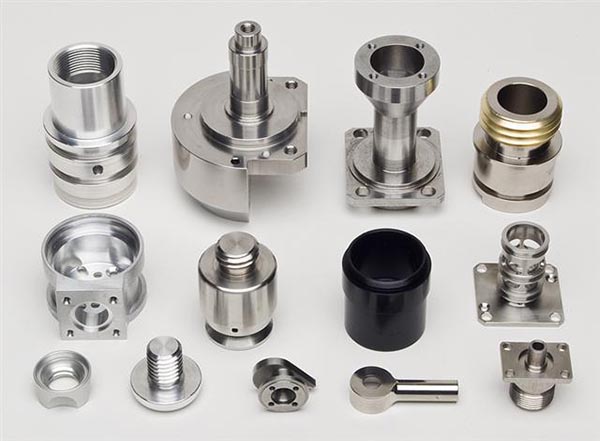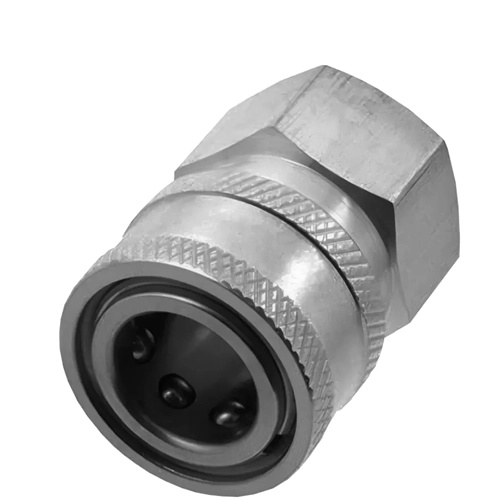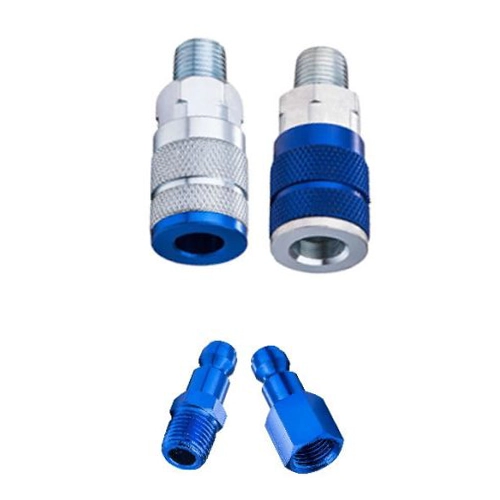Torque Control Techniques for Threaded Connections in CNC-Machined parts
Fundamental Principles of Torque Control in Threaded Connections
Torque control in threaded connections serves as the cornerstone for ensuring mechanical stability and operational safety in CNC-machined assemblies. The relationship between applied torque (T), preload force (F), and thread geometry is mathematically expressed as T = K × F × d, where K represents the torque coefficient influenced by friction, thread surface finish, and lubrication, while d denotes the nominal thread diameter. This formula underscores the sensitivity of preload accuracy to variations in K, which can range from 0.1 to 0.5 depending on manufacturing tolerances and environmental conditions.
In precision assemblies, such as aerospace or automotive components, achieving consistent preload is critical. For instance, a ±25% variation in preload due to torque coefficient fluctuations could compromise joint integrity under cyclic loading. To mitigate this, engineers often adopt higher design margins or employ advanced control methods that account for friction-induced variability.
Advanced Torque Control Strategies
Torque-Angle Monitoring Method
This hybrid approach combines torque thresholding with angular displacement tracking to enhance preload consistency. The process involves two stages:
- Initial Torque Application: A preset torque (typically 40–70% of final target) is applied to seat the fastener and overcome surface irregularities.
- Angle-Controlled Final Tightening: After reaching the initial torque, the fastener is rotated by a calibrated angle (e.g., 90°) to achieve the desired preload.
This method reduces sensitivity to friction variations by leveraging the linear relationship between preload and angular displacement in the elastic region of the fastener. Studies indicate that torque-angle control can limit preload variation to ±15%, making it suitable for critical applications like engine cylinder heads or transmission housings.
Yield Point Control Technique
Yield point control exploits the material’s transition from elastic to plastic deformation to maximize preload efficiency. By continuously monitoring torque and angular velocity during tightening, the system identifies the inflection point where torque increase slows despite continued rotation—a hallmark of yield onset.
For example, in high-strength bolts (e.g., Grade 12.9), this method achieves preload variations below ±8% by eliminating friction-induced errors. However, it requires stringent surface preparation to avoid false triggers from debris or lubrication inconsistencies. Applications include brake calipers and suspension components where preload precision directly impacts safety.
Bolt Elongation Measurement
Direct measurement of bolt elongation via ultrasonic sensors or laser interferometry offers the highest preload accuracy (±3–5%). This technique is particularly valuable for large-diameter fasteners or assemblies subjected to extreme thermal cycling, such as turbine casings or nuclear reactor vessels.
By correlating elongation with preload using Hooke’s Law, engineers bypass friction-related uncertainties entirely. However, implementation costs and complexity limit its use to high-value or safety-critical applications where conventional methods fall short.
Practical Implementation Considerations
Tool Selection and Calibration
The choice of tightening tool—pneumatic, electric, or manual—directly impacts process repeatability. Electric screwdrivers with integrated torque-angle sensors are preferred for automated lines, offering ±5% torque accuracy and real-time data logging. Pneumatic tools, while cost-effective, require frequent calibration to maintain ±10% accuracy due to air pressure fluctuations.
Calibration intervals should align with ISO 5393 standards, with daily verification using certified test bolts. For example, a manufacturing facility producing automotive transmissions might calibrate tools every 8 hours to account for thermal drift in electric motors.
Environmental and Material Factors
Temperature variations can alter material elasticity and lubricant viscosity, introducing preload errors. In a study of aluminum-to-steel joints, a 20°C temperature rise reduced preload by 12% due to thermal expansion mismatch. To compensate, engineers may incorporate temperature compensation algorithms into tightening controllers or schedule production during stable environmental conditions.
Surface treatments also play a crucial role. Zinc-plated fasteners exhibit higher friction coefficients (μ ≈ 0.25) compared to black oxide-coated variants (μ ≈ 0.15), necessitating torque adjustments to achieve equivalent preload. Lubricant selection—whether molybdenum disulfide for high-temperature applications or silicone-based for food-grade assemblies—must align with operational requirements.
Quality Assurance Protocols
Statistical Process Control (SPC) is indispensable for monitoring torque control performance. Control charts tracking torque and angle data can identify tool wear, lubricant degradation, or operator errors before they escalate into quality issues. For instance, a Cpk value ≥1.33 for critical fasteners indicates a capable process, while values below 1.0 trigger root-cause analysis.
Post-assembly verification methods, such as ultrasonic preload measurement or load cells, provide secondary validation for high-risk applications. In aviation manufacturing, 100% inspection of landing gear fasteners using ultrasonic techniques ensures compliance with FAA regulations.
By integrating these strategies, manufacturers can achieve thread connection reliability exceeding 99.9%, minimizing field failures and warranty claims. The key lies in aligning torque control methods with component requirements, environmental constraints, and production volumes.





